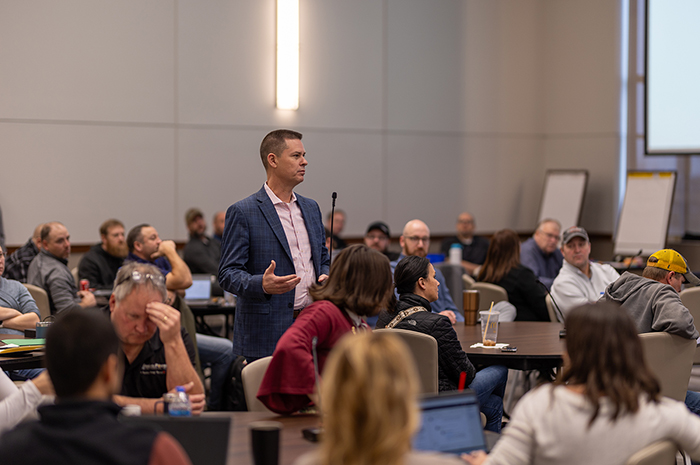Minnkota receives CO2 storage permit from NDIC
The permit approval will help advance the cooperative’s Project Tundra carbon capture initiative.
GRAND FORKS, N.D. – The North Dakota Industrial Commission (NDIC) approved a permit on Jan. 21 allowing Minnkota Power Cooperative to safely and permanently store carbon dioxide (CO2) deep underground near Center, N.D.
Approval of the Class VI injection well permit is an important step forward in the development of Project Tundra, which aims to install CO2 capture technology at the Minnkota-operated Milton R. Young Station. About 4 million metric tons of CO2 are planned to be captured annually from the coal-based power plant and stored in geologic formations approximately one mile underground near the plant site. If Project Tundra moves forward into construction, it will be the largest post-combustion CO2 capture project in the world.

North Dakota is one of only two states that has received approval from the U.S. Environmental Protection Agency to regulate geologic storage of CO2 (also known as primacy). This is the second Class VI injection well permit that has been issued in the state.
“North Dakota is positioned to be a global leader in finding solutions to reduce CO2 emissions,” said Mac McLennan, Minnkota President and CEO. “Not only do we have ideal geology for CO2 storage, we also have a state that promotes innovation and provides leadership in the development of cutting-edge energy technologies.”
Minnkota developed the Class VI permit in partnership with the Energy & Environmental Research Center (EERC) at the University of North Dakota and Oxy Low Carbon Ventures. The permit builds on more than two decades of research conducted by EERC on geologic storage of CO2 in North Dakota.
“The EERC is one of the world’s foremost experts in geologic CO2 storage,” McLennan said. “Working with their scientists, geologists and other energy experts in our home state has been vitally important to ensuring the safety and sustainability of Project Tundra’s CO2 storage facility.”
The process for receiving the Class VI permit required significant data collection, analysis and documentation to ensure safe, permanent storage. Two stratigraphic test wells were drilled more than 10,000 feet underground to retrieve core samples in 2020, while a series of seismic and geophysical surveys were also conducted in the area. The permit requires the installation of a wide array of monitoring technologies to track CO2 movement in the subsurface, including down-hole and surface CO2 sensors.
“We are grateful to have worked with Minnkota to help advance Project Tundra,” said Charlie Gorecki, CEO of the EERC. “This project brings together energy and environmental science and technology to use North Dakota resources in a safe, clean and sustainable manner. By applying carbon capture and storage at a coal-based power plant, we don’t have to choose between reliability, affordability and environmentally sound energy sources – we can have all three!”
Oxy Low Carbon Ventures, with 50 years of experience in the multi-disciplinary execution of carbon management, is advising Minnkota on the safe design and overall requirements of Project Tundra’s storage facility.
“We congratulate Minnkota on the approval of the Class VI permit and are proud to contribute to this groundbreaking initiative to build a carbon capture facility at their plant,” said Dr. Doug Conquest, Vice President, Services, Oxy Low Carbon Ventures. “Geologic sequestration is a safe, permanent solution for industries seeking to reduce their carbon footprint and meet their CO2 emission reduction objectives.”
During the permit development process, Minnkota has worked closely with area landowners and other key stakeholders through various open houses, virtual meetings and other outreach efforts.
“Our people at the Young Station are personally invested in the safety and environmental responsibility of this project because this is their home,” McLennan said. “We are thankful for the support we’ve received from the communities in Oliver County and remain committed to communicating with them as the project continues ahead.”
In 2022, Minnkota will work with its partners to further refine Project Tundra’s engineering plans and overall project economics. A request has been submitted to the state’s Lignite Research Council to provide special grant funding to assist with the final construction-ready engineering plan.
Minnkota anticipates making a decision on whether to move forward with construction of Project Tundra in late 2022. The approximately $1 billion project would primarily be funded through federal 45Q tax credits. If approved by the cooperative’s board of directors, construction could begin near the end of the year with a goal to commence operations in 2026.
To learn more about Project Tundra, visit ProjectTundraND.com.
...



